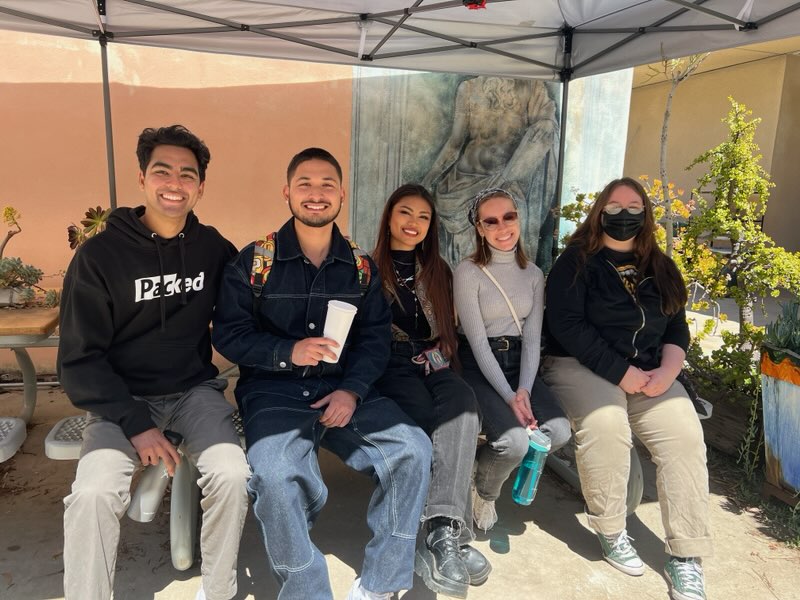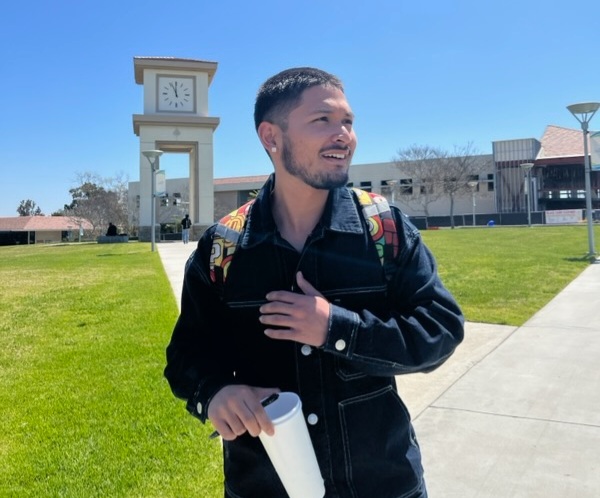Spring 2023: Gabrielle Jimenez, Jennifer Muiños, Naomi Raney, Victoria Siaumau, Sara Sparks
Over the past quarter, our group had the opportunity to meet at MiraCosta community college in the city of Oceanside to collaborate with Dr. Quintanilla’s Race and Ethnic Relations class. MiraCosta serves over 12,000 students of all ages, ethnic backgrounds, and aspirations. The ethnic studies space we found ourselves in is a recent development at MiraCosta where Dr Q, herself is at the forefront of introducing more ethnic studies curriculum to the population. As we entered into this collaboration, we came to understand that this class led by Dr. Q was the first ethnic studies class being offered at MiraCosta.
Working with Dr. Quintanilla was an enlightening experience as it allowed us to work with community college students directly and take part in the formation of the newly constructed Ethnic Studies course. Upon first meeting with her, Dr. Quintanilla was passionate about learning what drove each of us to take part in this project and how to incorporate those motivations into our collaborative work. Most of us were either intrigued by the process and application of oral history or expressed interest in future teaching or research occupations. She proposed we each work directly with a group of students in the classroom to facilitate discussions and explore how oral history impacts research, education, and daily life. Dr. Quintanilla also put care into what students were placed in specific groups and checked in with each of us to make sure we felt supported.

The student population within the class was quite diverse. There was a wide age range among them and various ethnic and racial backgrounds were represented. Some had come directly from high school while others had taken a gap year or were pursuing a career change. The many differences between the students made working with them especially interesting and insightful. For instance, each age group brought beneficial experiences and wisdom to the table. The contrasts and similarities between the age groups offered the opportunity to learn more about how different experiences between generations impact the perception of current events; specific examples include how COVID affected our lives and generally held beliefs surrounding topics such as refugees or the LGBTQ+ community. Additionally, the different ethnicities allowed for deeper conversations about the multiple perspectives behind controversial topics such as immigration which was a popular topic of interest and passion.
During these discussions, we were also able to learn more about the community college experience and the goals of those who attend. For example, there is a general misconception that community college students either do not want to or cannot attend four-year universities. Our conversations with the students debunked this entirely. Many had plans to transfer to a university to pursue their bachelor’s degree and MiraCosta has programs that offer support to their students in successfully transferring to four-year colleges. We found this class of students to be highly motivated and dedicated to making a positive impact on their community. One student, named Ricardo, was one of the older students in the class who shared his own oral history, having been incarcerated at a young age and sharing the value of the resources at MiraCosta. He had shared his experience using artistic expression to change his situation and now finds himself working with MiraCosta’s program supporting those transitioning from incarceration to community college. His story is just one of many which represent the wide array of students we were able to collaborate with, but it very much reflects the kind of paths taken by students to extend to others the same hand extended to them.

For the final project of this class, the students were required to work with members of their community to produce their own oral histories, and through this process were able to learn more about the various backgrounds of their chosen interviewees and the importance of Ethnic Studies. These interviews explored how the interviewee’s race, gender, incarceration status, immigration status, and other aspects of their identities played a role in their experiences, especially in regard to their education and how they were able to navigate American society, and were presented to the class at the end of the semester so that the other students in the class could also learn from their experiences. Through these stories that were being told in class, the students were able to understand how important it is to listen to individuals and to look at each person’s history and the story they have to tell through an intersectional lens that works to examine the ways in which power and a person’s ethnic background might have an impact on their experiences. This is one of the strategies that Ethnic Studies uses to address the issues that are found in their community that might stem from systemic societal issues. As a result of this, it is possible to see how integral these oral histories were to the student’s understanding of Ethnic Studies.


In addition, the oral histories that were conducted and presented were often directly connected to the themes present in the curriculum and the readings of this class, especially in the ways that they worked to address social issues that were present. Professor Quinantilla was able to effectively connect the students in this Ethnic Studies class with their communities through their efforts to conduct oral histories, and was able to connect the personal stories that were being told to a curriculum that she had personally developed in a way that was meaningful to the student’s understanding of the importance of both Ethnic Studies as a field and the ways in which oral histories can be used to connect this academic field to the broader community of the students who are learning it.

